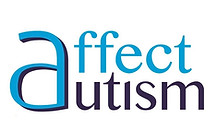_edited.jpg)

Empowering Communication. Connecting Lives
Specialized Speech Therapy Services for Hearing Loss and Autism
Are you or your loved one seeking high-quality speech therapy services in Singapore? Look no further. At Speech Therapy Adventures, we are dedicated to providing comprehensive and personalized speech and language therapy for children and adults, with a specific focus on individuals with hearing loss and autism.
Unleash Your Communication Potential
Whether for you or someone you love, we combine expertise, passion, and proven methods to unlock communication and confidence
Customized, Personalized Care Designed for You
Every individual is unique. Our therapy plans are designed around personal goals, ensuring relevance, engagement, and meaningful progress.
Evidence-Based Strategies That Help You Thrive Faster
We use proven methods that deliver results — building strong foundations and accelerating progress tailored to specific needs
INSPIRATION BEHIND THE BRAND

Begin Your Adventure Together—Expert Support Every Step of the Way
Every communication journey begins with a call to action — a moment of realizing that change is possible and help is within reach. At Speech Therapy Adventures, we embrace this journey alongside you, whether you are seeking support for yourself or for someone you love. We guide you through unfamiliar territory, helping you navigate challenges and uncover new possibilities.
Together, we embark on an adventure of learning, growth, and connection. With our experienced therapists as your trusted guides, you’ll find personalized strategies and effective solutions that lead to meaningful progress. Whether for a child, teen, or adult, we empower every individual — and every family — to thrive on this transformative path toward confident communication and a fuller life.

Naomi wong
Meet Naomi:
20+ Years Clinical Expertise,
Expert DIRFloortime® Training Leader
Hearing Rehab Specialist
Speech and Language Therapist
Clinical Educator and Consultant
With nearly 20 years in public healthcare before starting her own practice, Naomi Wong brings deep expertise and heartfelt commitment to helping individuals of all ages communicate with confidence. She partners with families on this journey, empowering them with practical tools so relationships can flourish and each person’s unique potential can shine.
Naomi is frequently invited to share her insights on News Radio 938 and at international conferences, speaking on topics such as speech therapy, developmental approaches, and hearing loss advocacy in the workplace. Locally, she trains and consults with therapists and educators across Voluntary Welfare Organisations including Thye Hua Kwan Early Intervention Centre, MINDS, and AWWA, and teaches Floortime courses internationally through the International Council on Development and Learning (ICDL).
As a mother of three, Naomi understands the fears, hopes, and determination parents feel. She believes therapy should be developmental, play-based, and deeply respectful of each individual’s interests, creating joyful learning that translates into real-life progress. Her approach combines evidence-based strategies with genuine connection — giving families not just therapy, but hope, clarity, and a trusted guide every step of the way.
Elle's success story

Don't miss this!
Real Parent Stories—Progress You Can See, Support You Can Feel
Remarkable Improvement in Social Engagement
⭐⭐⭐⭐⭐
After just 7 sessions with Naomi, my daughter has shown tremendous progress in her eye contact and social engagement. She's now able to focus on play for much longer periods. Naomi’s professional and relatable advice has empowered us as parents, giving us tools to support our child’s social, emotional, and speech development. It’s been a relief to have this 'peer support' as we navigate these challenges together. Thank you so much for your guidance and encouragement!"
— Mother of Elle








Frequently asked questions
- 01
- 02
- 03
- 04
- 05
- 06
- 07
- 08
- 09
- 10
- 11
- 12
- 13
- 14
- 15
- 16
- 17
- 18
- 19
- 20
- 21
- 22
- 23
- 24
- 25
- 26
- 27
- 28
- 29
- 30
- 31
- 32
FREE MILESTONE CHECKLIST
I want a language, speech and communication checklist. For ages 0-4 years old.
This comprehensive milestone checklist is easy to administer and takes only 20 minutes of your time. At the end of this checklist, you will know with certainty what your child’s abilities are as well as your next course of action.
CONTACT FORM









